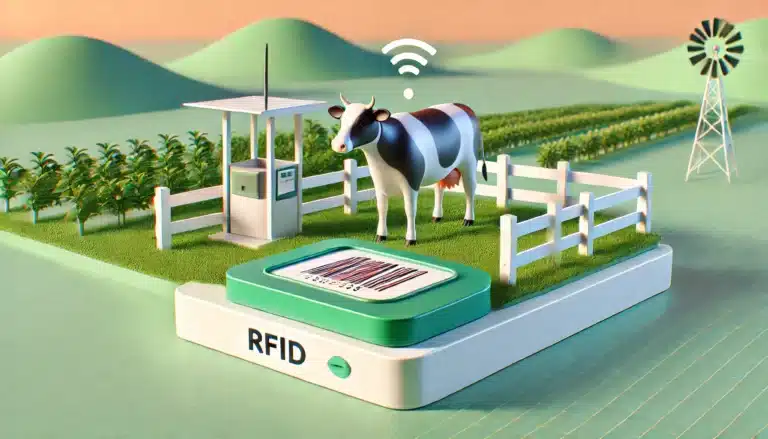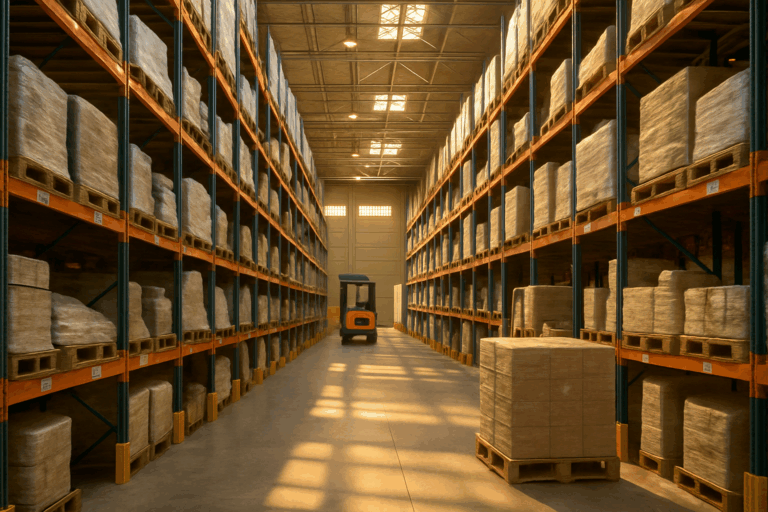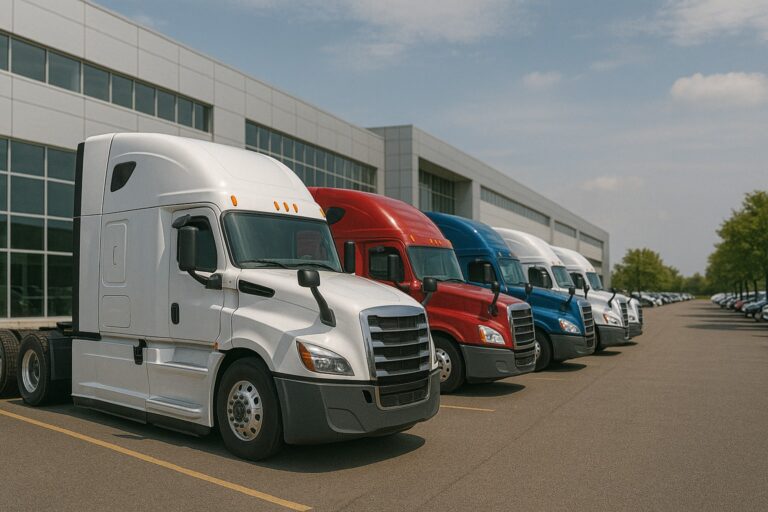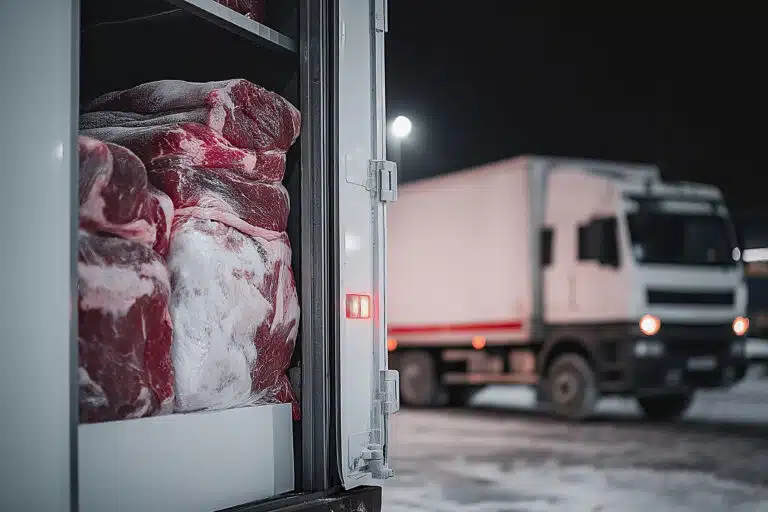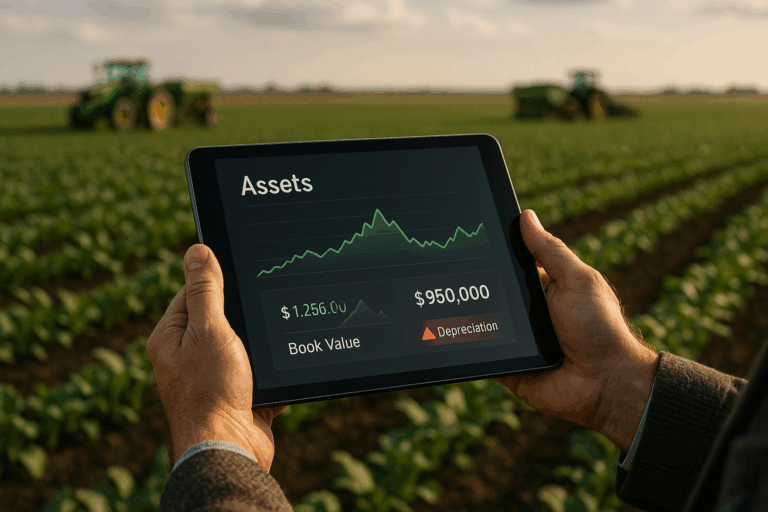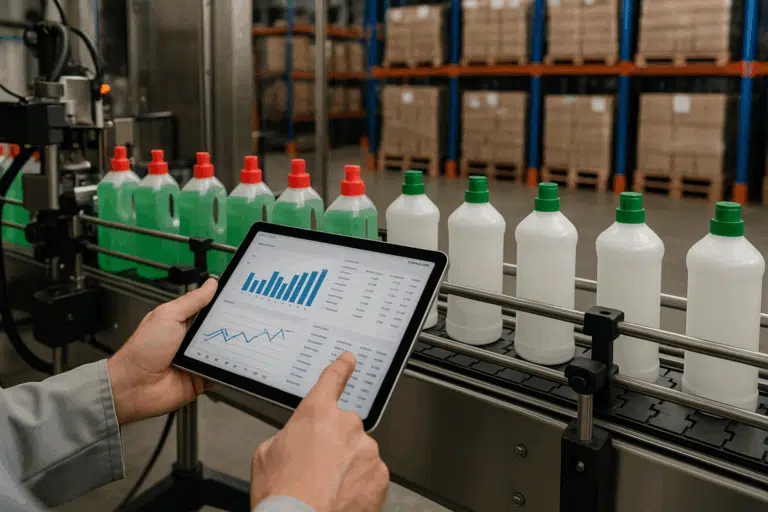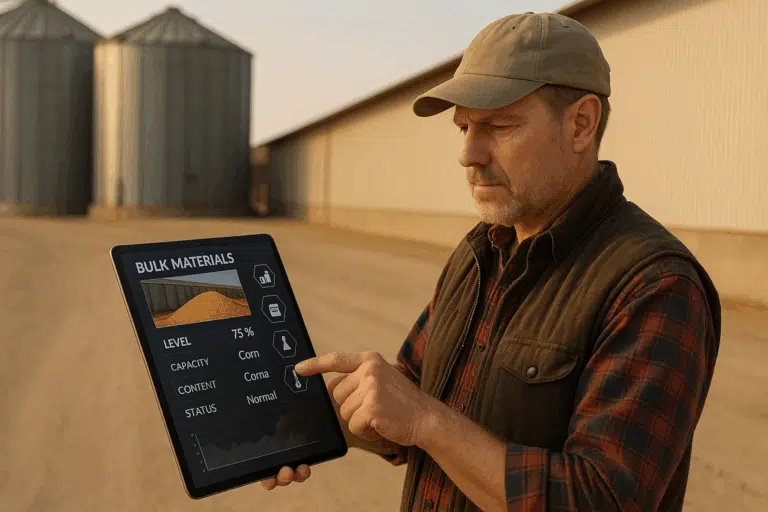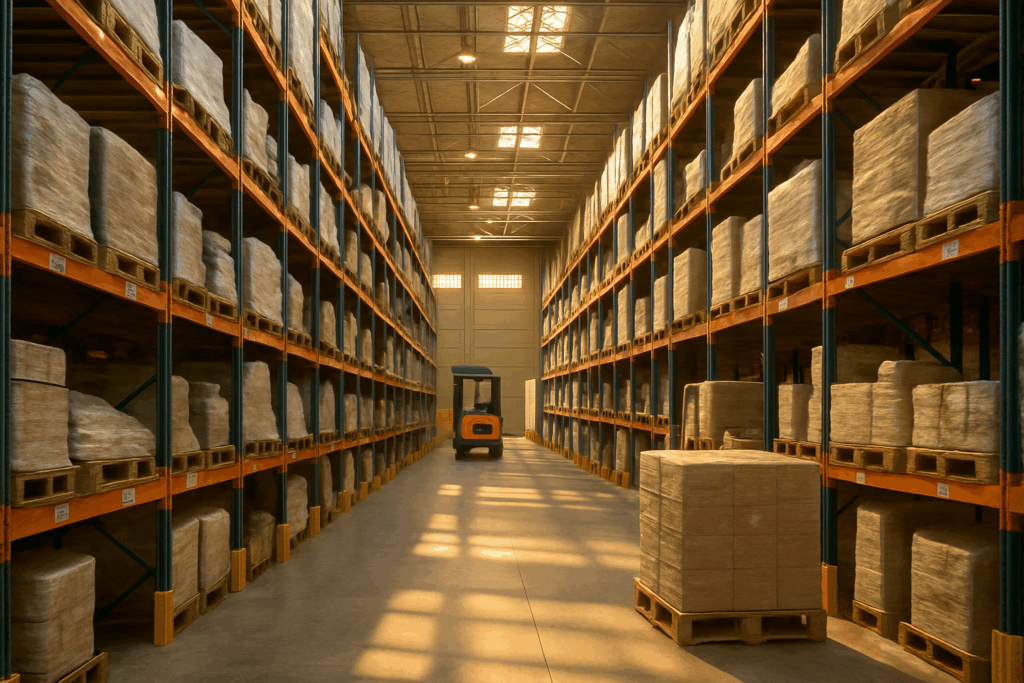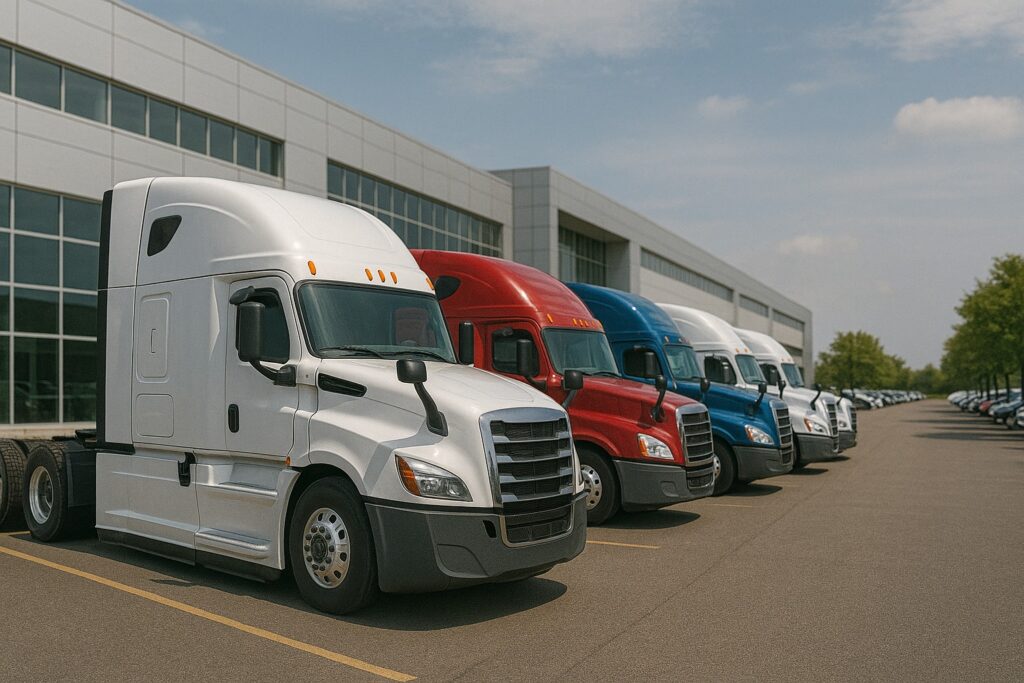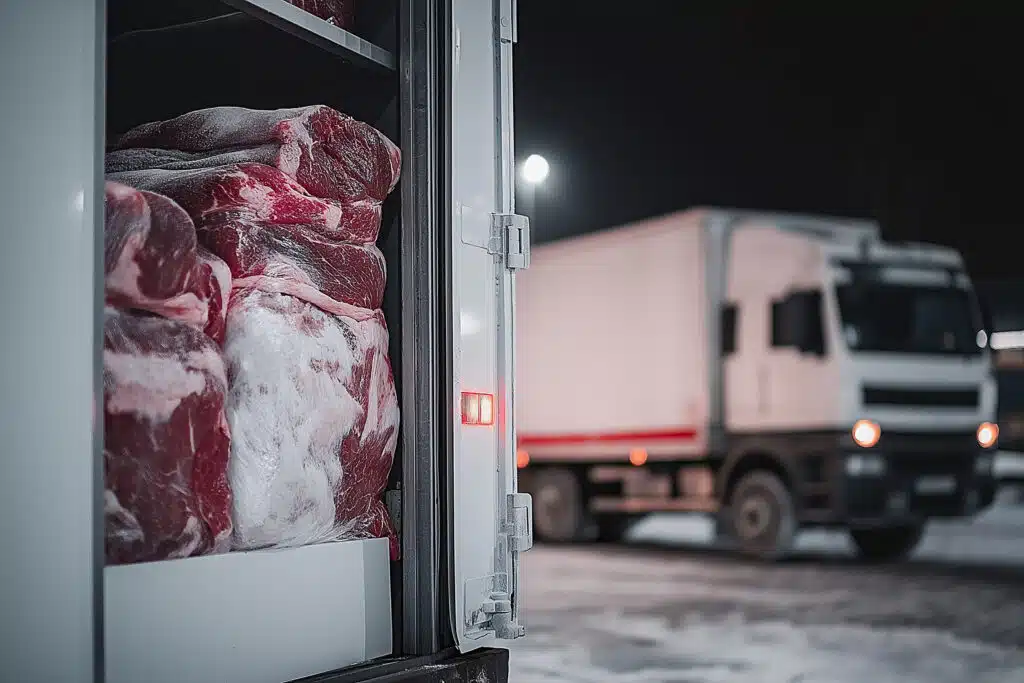Ever wondered how ranchers track their cattle so well? It’s all thanks to RFID technology. But how do RFID tags for cattle help with managing them?
RFID tags have changed the game in livestock management. They use electromagnetic fields to send data from cattle tags to RFID readers. This creates a strong RFID tracking system for livestock.
It’s important to know how RFID technology works for ranching or livestock management. This article explains how RFID tags help manage herds efficiently.
Table of Contents
ToggleKey Takeaways
- RFID technology uses electromagnetic fields to communicate data from tags to readers.
- RFID tags provide essential real-time data, improving herd management.
- Using RFID tags meets regulations, like the USDA’s cattle ID rules.
- RFID systems make ranching work better and care for animals more effective.
- RFID tags increase productivity and make cattle management easier.
- For more info, check out CPCON’s guide on electronic ear tags for cattle.
Introduction to RFID Technology in Livestock Management
RFID technology is key in modern farming. It helps with tracking and keeping inventory, vital in big farms today.
Overview of RFID Technology
RFID uses tags and readers for real-time updates. There are passive and active tags. Passive tags are cheaper but have a shorter range. Active tags are more expensive but reach farther.
Using RFID in farming brings many benefits. It makes things more visible, cuts down on labor costs, and tracks assets better. For more details, check here.
Importance in Livestock Management
RFID helps track and manage herds accurately. It boosts biosecurity by tracing animal movements. This is key for stopping diseases.
RFID also helps follow rules and makes farming more efficient. It’s a big plus for cattle ranches.
| Type of RFID Tag | Cost | Range | Benefits |
|---|---|---|---|
| Passive | Low | Short | Cost-effective, suitable for close-range tracking |
| Active | High | Long | Enhanced range, better for large-scale operations |
Understanding RFID Tag Design for Cattle
Good livestock management needs smart tag design. This lets RFID tech fit right into daily tasks. Knowing about RFID tags for cattle helps us track and manage them better. Let’s look at what makes up these tags and the difference between passive and active tags. We’ll also focus on RFID ear tags for cattle.
Components of RFID Tags
RFID tags have important parts that make them work:
- Microchip: Holds unique cattle info that RFID readers can read.
- Antenna: Helps the tag talk to RFID readers.
- Encasement: Keeps the tag safe and lasts in tough conditions.
Types of RFID Tags: Passive vs. Active
RFID tags come in two types based on power source:
| Type | Description |
|---|---|
| Passive Tags | Don’t have a power source. They get activated by the reader’s field. |
| Active Tags | Have a battery. They offer more range and features. |
RFID Ear Tags for Cattle
RFID ear tags for cattle are very popular. They’re easy to put on and work well. These tags stick to the cattle’s ear, sending data reliably. They’re made to last in tough farm conditions and keep reading well.
How RFID Tags for Cattle Work
RFID technology changes how we manage livestock. It gives us exact data and sends it fast. Let’s see how RFID tags for cattle work.
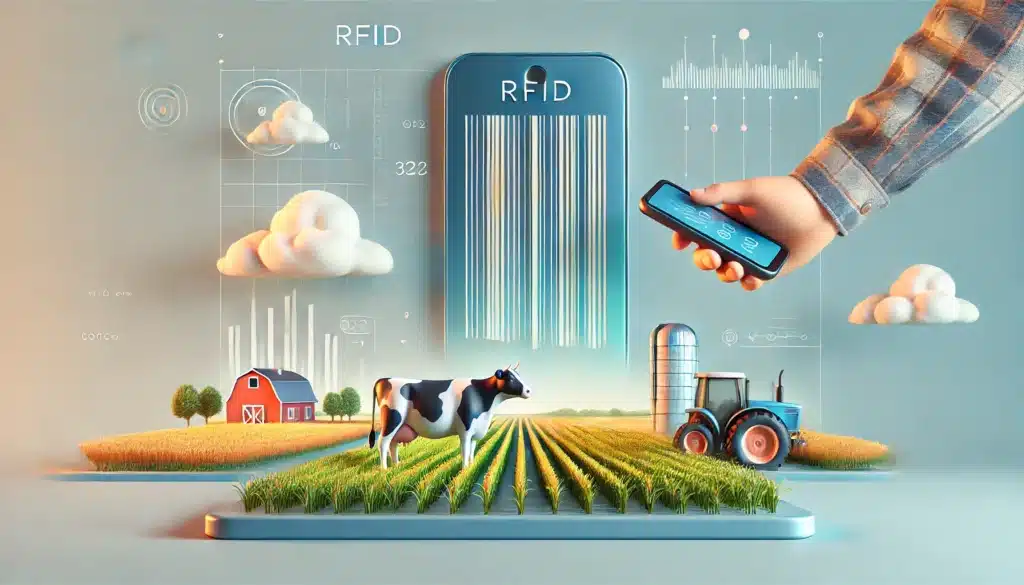
- Tag Activation: RFID tags have a microchip with unique data. When a reader sends a signal, passive tags use this energy to turn on. Active tags have their own power.
- Data Transmission: After turning on, the tag sends its data to the reader. This happens fast, which is great for big herds.
- Reader Reception: The reader gets the data and sends it to a main system. This lets ranchers keep track of their cattle well.
- Environmental Interaction: RFID tags are tough. They work well even in tough farm conditions.
Knowing how RFID tags for cattle work helps ranchers a lot. It makes their work better and helps them make smart choices.
| RFID Tag Function | Passive Tags | Active Tags |
|---|---|---|
| Power Source | No internal power, activates via reader | Built-in battery, initiates signal |
| Transmission Range | Shorter range (up to a few meters) | Longer range (up to hundreds of meters) |
| Cost | Generally lower | Higher due to battery |
| Application | Inventory tracking, basic data collection | Real-time tracking, advanced monitoring |
This detailed look shows how RFID tags for cattle work. It shows how they help manage cattle better.
Reader Interaction and Data Storage
RFID systems in cattle management rely on RFID readers. These readers help connect RFID tags to data uses. They make interaction, storage, and tracking better.
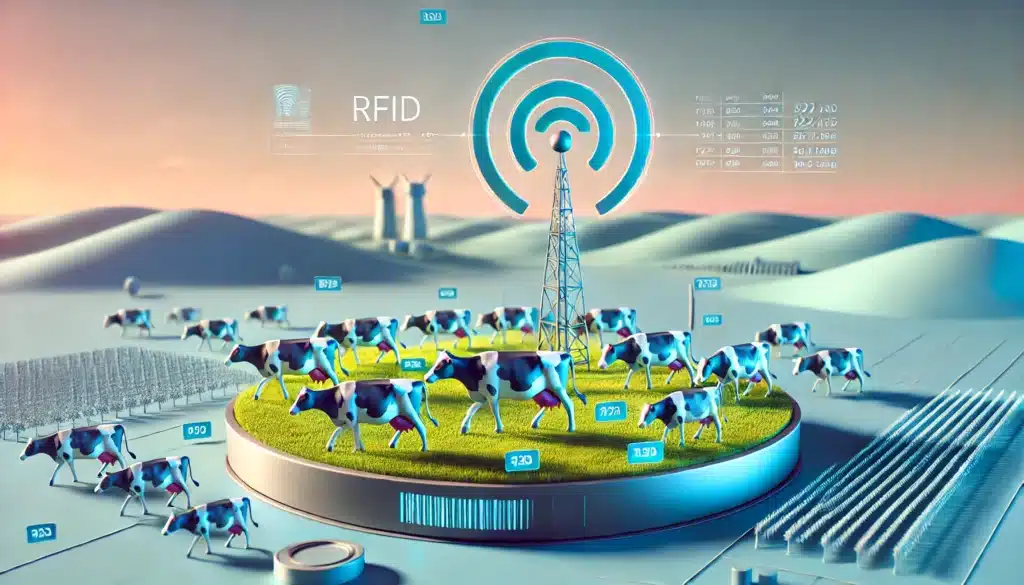
How RFID Readers Work
RFID readers are key in RFID tech. They use electromagnetic fields to talk to RFID tags. When cattle go by, the reader grabs their unique data fast.
This makes managing livestock easier. It cuts down on mistakes and speeds up work.
Data Storage and Management
Storing data well is key in RFID cattle management. The data from RFID readers goes into big databases. This helps manage lots of info.
It also helps with smart analysis. We get to know more about cattle health and how they do. Plus, keeping data safe helps us make better choices.
Real-time Tracking and Monitoring
RFID systems are great at tracking and watching cattle live. They let us see where and how cattle are doing. This helps spot problems fast.
With live updates, we can act quickly. This makes caring for cattle better and work more efficient.
In short, RFID readers, good data storage, and live tracking change cattle management. Our method improves data use and helps manage livestock better.
Applications of RFID in Agriculture
RFID technology makes farming more efficient and follows rules better. It changes old ways of taking care of animals into something new and easier.
Tracking and Tracing Animals
RFID helps track animals. It uses tags or implants to know where animals are at all times. Farmers can keep up with each animal’s life and where it is now.
Disease Control and Prevention
RFID helps stop diseases by giving detailed info on animals. This info helps spot problems early. It keeps animals healthy and saves money lost to diseases.
Efficient Herd Management
RFID makes managing animals better. It tracks when animals eat, grow, and breed. This helps farmers make smart choices and use resources well.
Compliance with Livestock Regulations
RFID helps follow rules for animals. It keeps accurate records and reports. This lowers the chance of breaking rules and keeps the animal supply chain safe.
| Application | Benefit |
|---|---|
| Tracking and Tracing Animals | Real-time monitoring of livestock |
| Disease Control and Prevention | Timely interventions and outbreak prevention |
| Efficient Herd Management | Automation of feeding schedules, growth tracking, and reproductive cycles |
| Compliance with Livestock Regulations | Accurate record-keeping and reporting |
Benefits of Using RFID Tags in Cattle Ranching
RFID technology makes managing cattle herds better. It helps with identification, makes operations more efficient, and saves money. These are big wins for ranchers today.
Improved Livestock Identification
RFID tags help identify each animal in a herd well. They make sure food is safe and of high quality. They also let ranchers track animals in real-time, helping them respond fast to health problems.
Using RFID ear tags for cattle means ranchers can manage data accurately.
Enhanced Operational Efficiency
RFID tags make work easier by automating tasks. Keeping records, tracking animals, and monitoring health is now simpler. This saves time and boosts productivity.
By using RFID tags, ranchers can work more efficiently every day.
Cost Savings
RFID technology saves money for cattle ranchers. It cuts down on labor costs and reduces mistakes. It also helps ranchers deal with sick animals quickly, saving money.
RFID tags are a smart investment for ranchers. They offer many economic benefits. For more on how RFID tags save money, check out what experts say.
Conclusion
RFID technology is changing the game in cattle management. We’ve looked at how RFID tags work and their role in managing livestock. They offer real-time tracking and detailed data, making herd operations more efficient.
RFID tags come in passive and active types, meeting different ranching needs. They help with health checks, following rules, and making operations smoother. Using RFID tags can also save money and improve how we track animals. For more on RFID tags and their uses, check out CPCON’s page.
Using RFID technology shows a rancher’s dedication to innovation and doing things better. We believe in using advanced RFID solutions to make farming more efficient and controlled. These technologies are getting cheaper and easier to use, promising a future of precision in farming.
FAQ
How do RFID tags for cattle work?
RFID tags for cattle use electromagnetic fields. They transfer data from the tags to RFID readers. This helps in tracking and managing cattle efficiently.
What is RFID technology in livestock management?
RFID technology tracks and manages livestock. It uses radio waves to identify and monitor animals. This makes operations smoother and helps in making better decisions.
What are the advantages of using RFID tags in cattle ranching?
RFID tags improve cattle identification and ranch operations. They save costs and ensure data accuracy. This also helps in following regulations.
How do RFID readers work in a livestock tracking system?
RFID readers read data from cattle tags. They send this data to a database. There, it’s analyzed for real-time management and tracking.
What is the role of data storage in RFID tracking systems?
Data storage is key in RFID systems. It keeps all data safe. This data is used for analysis and decision-making in managing livestock.
How does RFID technology aid in disease control and prevention?
RFID helps track animals for disease control. It spots outbreaks early. This helps in monitoring health and preventing disease spread.
What are passive RFID tags and their significance in livestock management?
Passive RFID tags don’t need power. They work with RFID reader fields. They’re cost-effective, durable, and easy to use in managing livestock.
How does RFID technology ensure compliance with livestock regulations?
RFID ensures animal ID and traceability. It helps keep accurate records. This meets requirements from agricultural authorities.
What applications of RFID in agriculture extend beyond livestock management?
RFID is used for tracking produce and farm equipment. It monitors crop health and ensures food quality and safety. It’s not just for livestock.

